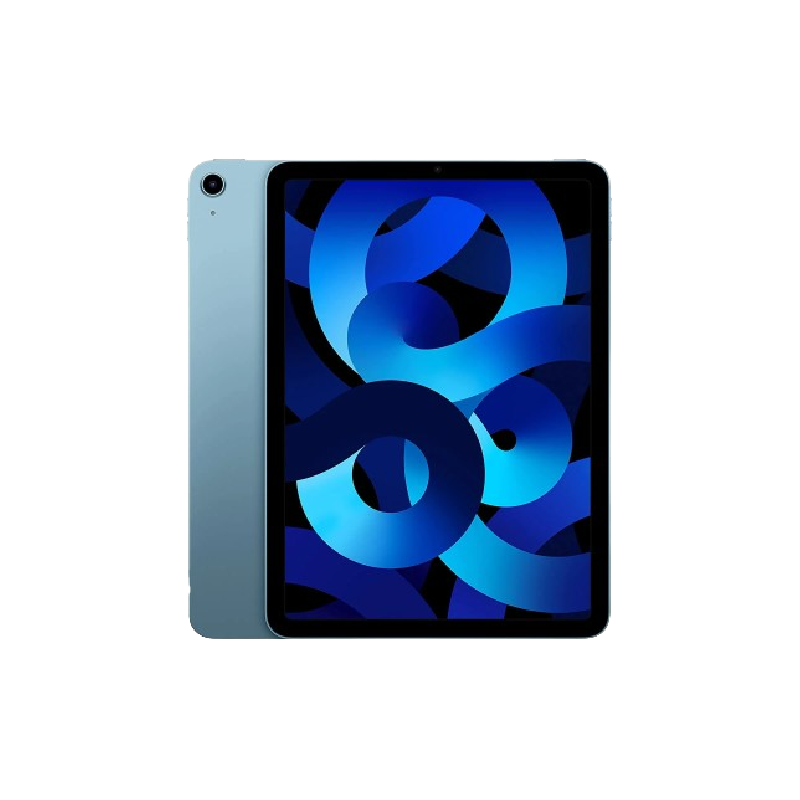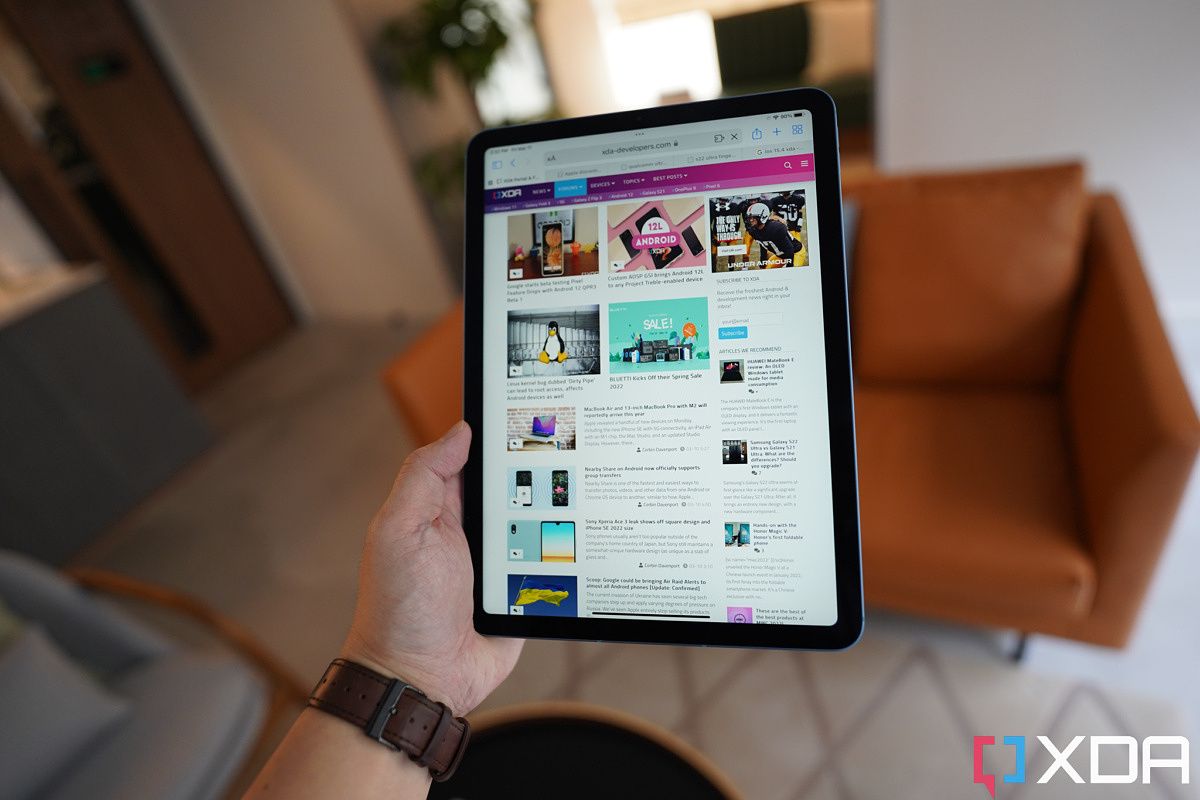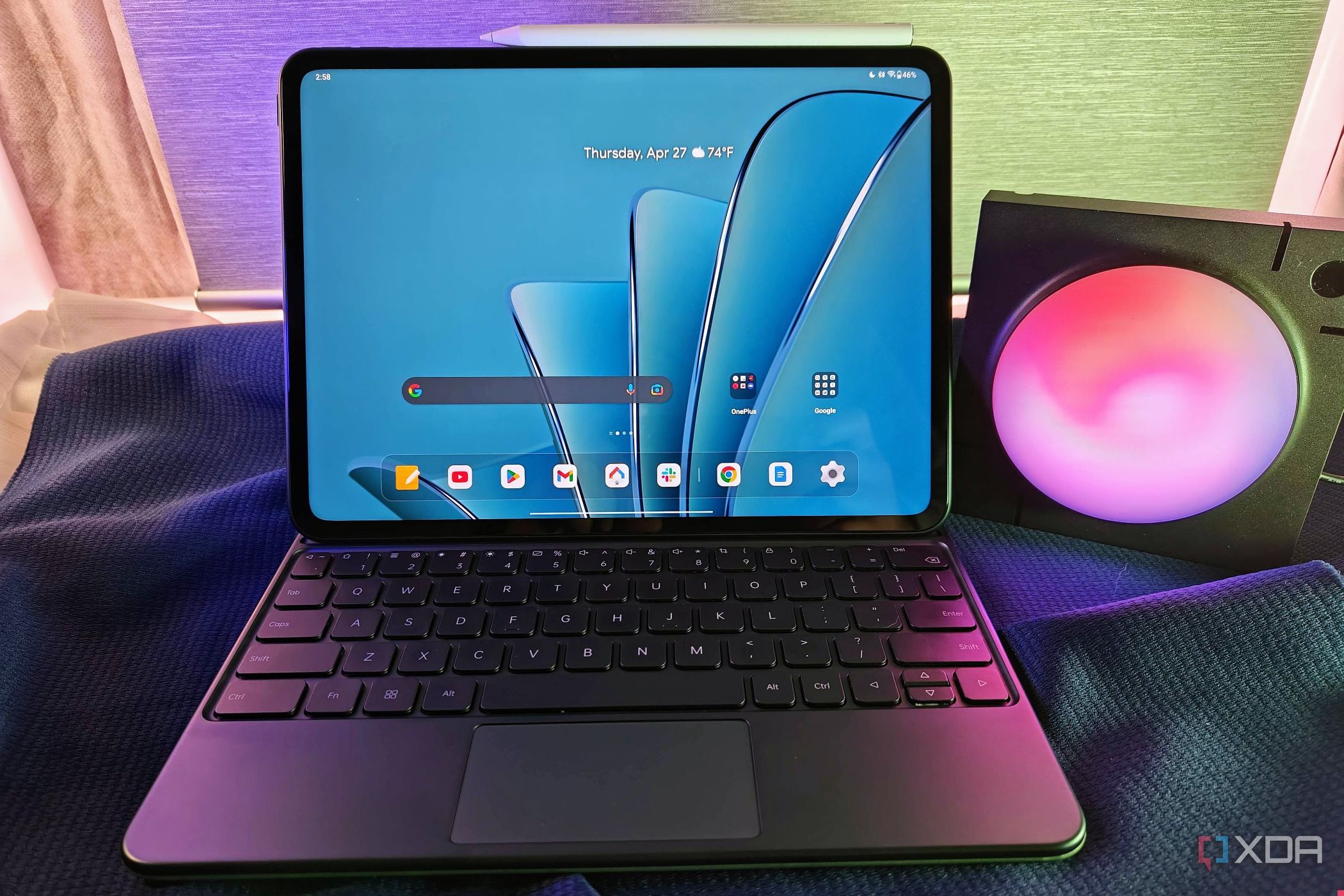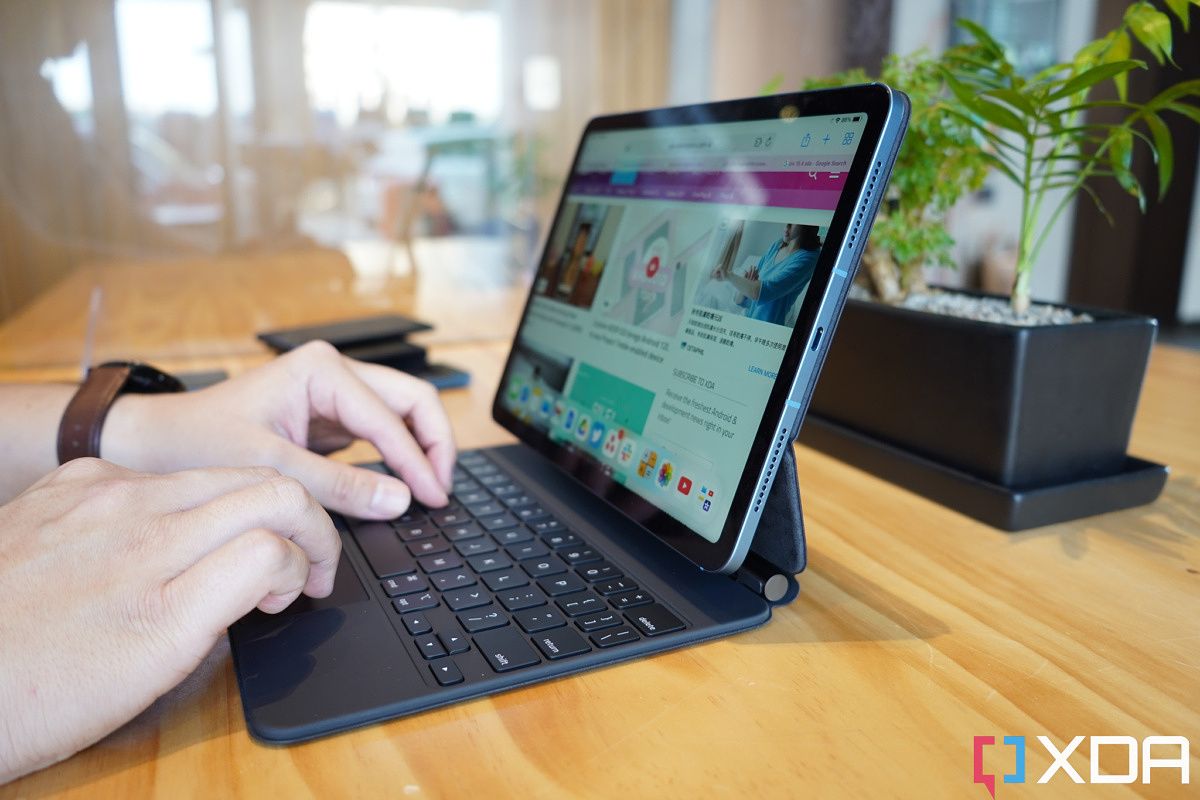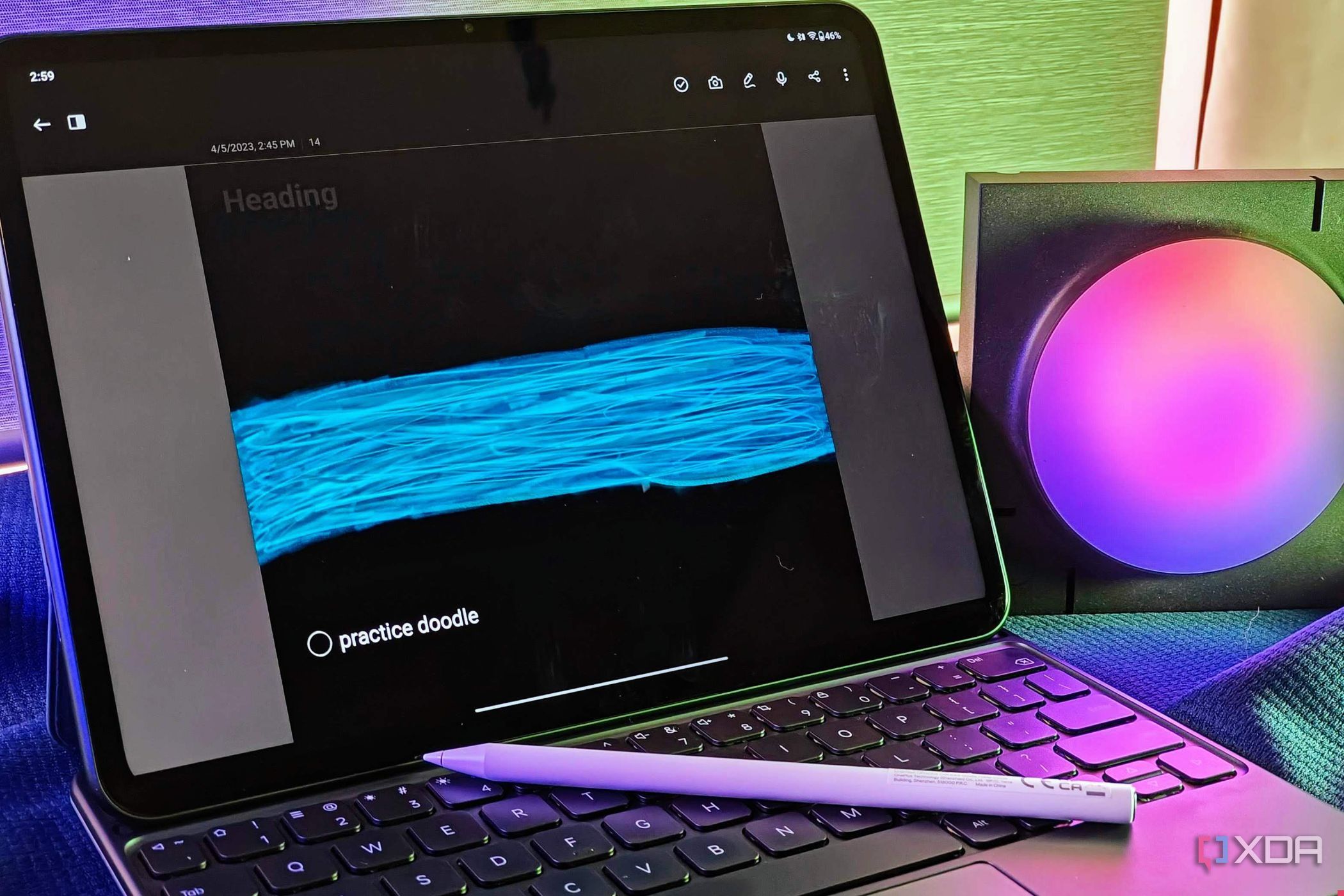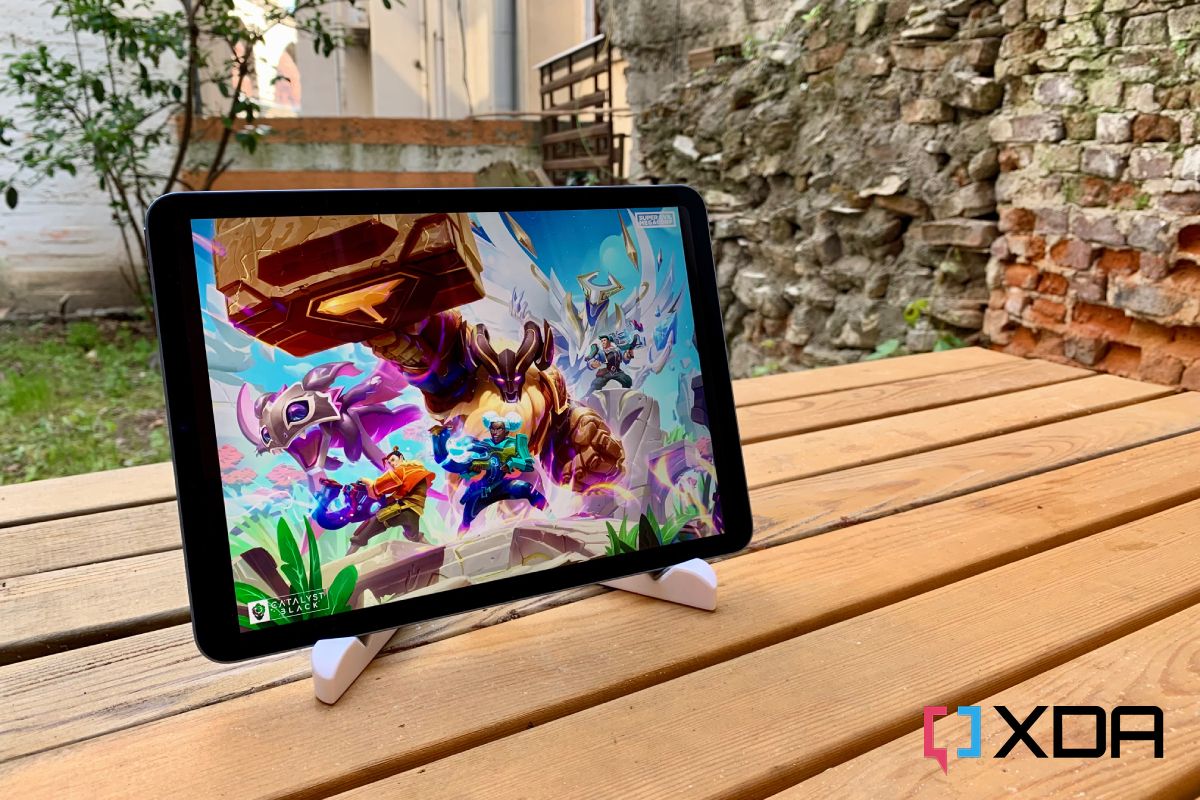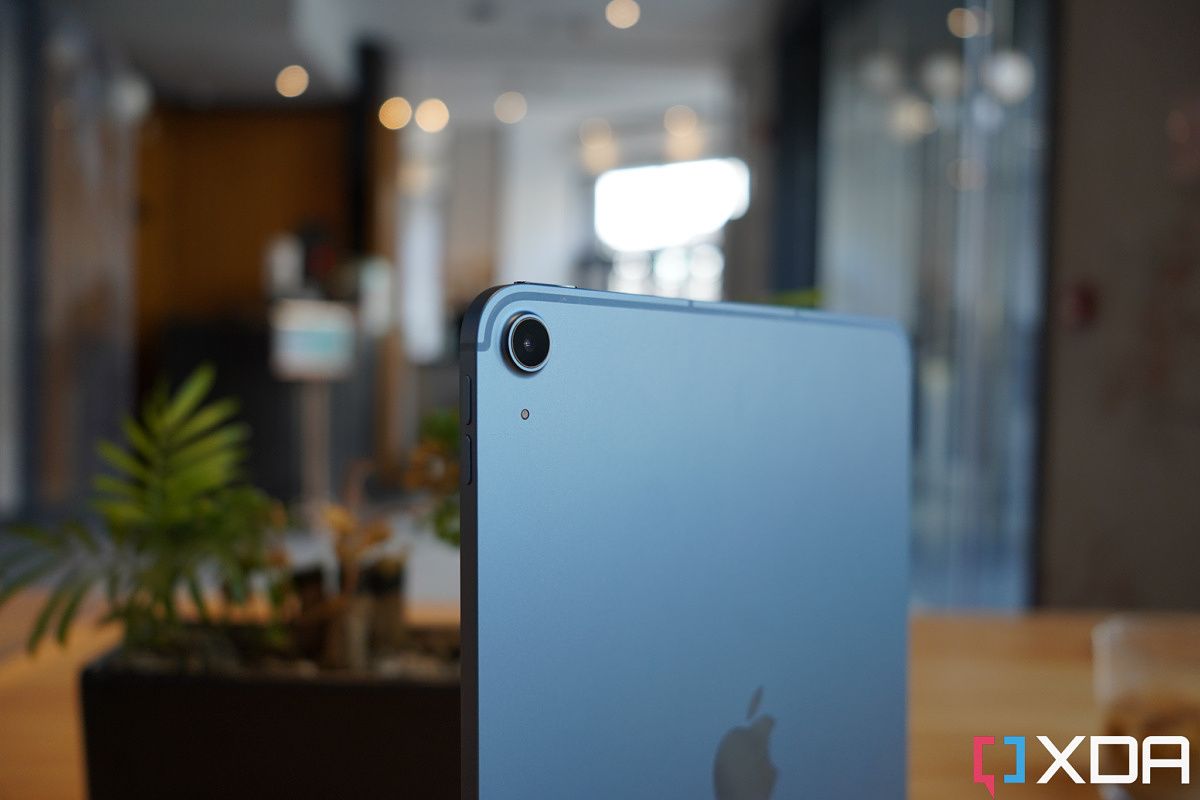-
Apple iPad Air 5
Winner$500 $599 Save $99The Apple iPad Air 5 offers the powerful M1 chip that makes it possible to do everything from watching videos and typing documents to video editing. It's easy to use and portable enough to take just about everywhere.
Pros- M1 chip is powerful and efficient
- Thin and lightweight
- Easy to use
Cons- Tablet is expensive and accessories are, too
- Only 60Hz refresh rate screen
-
OnePlus Pad
A worthy runner-upThe OnePlus Pad is a great tablet for Android aficionados. It runs without hiccups and its OxygenOS is easy to use. It is ideal for anything from web browsing to productivity.
Pros- Runs well
- Great battery
- Sound is loud and clear
Cons- Android is iffy with keyboards
- Stylus support in apps could be better
- Expensive accessories
Tablets are everywhere these days, and Apple seems to have cornered the market, so much so that the term "iPad" often gets used generically to refer to all tablets. But that doesn't mean there's no worthy competition out there. We've reviewed the iPad Air 5 (2022) before, and it boasts an M1 chip, 8GB of ram, and up to 256GB of storage, making it quite the contender. Meanwhile, we've also covered the OnePlus Pad, and it put up a notable showing with its 8GB of RAM and 128GB of storage, along with a MediaTek Dimensity 9000. In fact, it did so well that it ranks among the best Android tablets around. But is that enough to topple Apple from the top spot?
Price, availability, and specs
The iPad Air 5 launched in 2022 and starts at $599 for the 64GB model. If you want to upgrade to the fully-equipped 256GB model with cellular connectivity, that will set you back $899, which is pretty pricey. Plus, the keyboard and Apple Pencil cost extra.
Meanwhile, the OnePlus Pad is $479 (there is only one model available), and the Stylo stylus and keyboard cost extra. When it comes to cost, the OnePlus Pad wins, as is expected. If you hunt around patiently, you may find either tablet on sale at times.
Apple iPad Air 5 OnePlus Pad Storage 8GB RAM, 64GB or 256GB storage 8GB LPDDR5 RAM, 128GB UFS 3.1 CPU Eight core M1 MediaTek Dimensity 9000 Operating System iPadOS 16 OxygenOS-based on Android 13.1 Battery 7,600mAh 9,510mAh Battery, 67W SuperVooc Ports USB-C USB-C Camera (Rear, Front) Rear 12MP 4K 24FPS, 25FPS, 30FPS, 60FPS, 1080p 4K 24FPS, 25FPS, 30FPS, 60FPS, 720p 4K 24FPS, 25FPS, 30FPS, 60FPS, Front: 12MP, 1080p 25FPS, 30FPS, 60FPS Rear: 13MP, 720p 30FPS, 1080p 30FPS, 4K 30FPS, EIS, Front: 8MP, 720p 30FPS, 1080p 30FPS, EIS Display (Size, Resolution) 10.9-inch LCD, 2360x1640, 60 Hz refresh rate, 500 nits 11.61-inch LCD, 2800x2000 pixels, 30/60/90/120/144 Hz refresh rate, 120Hz/144Hz touch sampling rate, 500 nits Price $599 $479 Size 9.74 x 7.02 x 0.24 inches (247.6 x 178.5 x 6.1 mm) 10.2 x 7.5 x 0.3 inches (258 x 189.4 x 6.5mm), 1.09 lb (493 g) Connectivity All models: Wi-Fi 6 (802.11ax) with 2x2 MIM, Bluetooth 5.0, Cellular models: 5G NR, FDD-LTE, TD-LTE, UMTS/HSPA/HSPA+/DC‑HSDPA, eSIM Wi-Fi 6 (802.11ax), Wi-Fi 5 (802.11ac), 802.11a/b/g/n/, WLAN 2.4G/WLAN, 5.1G/WLAN 5.8G Colors Space Gray, Starlight, Pink, Purple, Blue Halo Green
Design
These two tablets are similarly sleek and stylish, though they each have their unique features. Apple offers the iPad Air 5 in a few different colorways, Space Gray, Starlight, Pink, Purple, or Blue, while the OnePlus Pad only comes in Halo Green. The iPad Air 5 is relatively thin at 6.1mm and weighs around one pound, Meanwhile, the OnePlus Pad is similarly svelte at 1.09 pounds and 6.5mm thick. Neither tablet will bog you down.
Where the OnePlus Pad does come in ahead is its speaker arrangement. There are four speakers total, two on each side. Dolby Atmos support is also included, so they sound great. The sound is loud and quite clear, and OnePlus even includes OmniBearing Sound Field technology, which automatically adjusts the sound depending on the screen's orientation. The iPad Air 5, in comparison, has a much more run-of-the-mill dual-speaker stereo setup. It's fine, but only the pricier iPad Air Pro has a comparable four-speaker setup. Both models eschew the headphone port and only come with a USB-C port, which is pretty standard on devices these days.
Display
Apple has kept the iPad Air at a 60Hz refresh rate for a while now, and the iPad Air 5 doesn't change that, which is slightly disappointing. It's not awful, but when scrolling, for instance, you may notice things don't move as smoothly as they could. Still, Apple makes excellent Retina displays. The 10.9-inch, 2360x1640 display here is plenty bright at 500 nits and easy to read. It also supports the Apple Pencil 2 as well, but that stylus will cost you extra.
The OnePlus Pad actually beats the iPad Air 5 here. It boasts an 11.6-inch, 2800x2000 display that's also 500 nits, but it supports variable refresh rates up to 144Hz. That ensures a smooth, sleek experience, and it can adjust depending on the app and battery usage. It's even Dolby Vision certified for great HDR content. You can use it with the Stylo stylus, which costs extra.
Both screens are LCD panels, but OnePlus offers a slightly larger display with higher refresh rates, so if you demand totally smooth scrolling or screen transitions, the OnePlus Pad edges out the iPad Air 5 here slightly. You'll be getting great tablet displays either way.
Software
Android is primarily a phone operating system, and while that might seem like it would translate well to larger screens, that isn't always the case. In contrast, iPadOS is a fork of iOS specifically built for larger displays, and that means Apple's offering tends to be a bit more cohesive and easy to use. OnePlus does try and make up for this with some specific modifications to its derivative of Android, called OxygenOS, but as usual, the devil is in the details.
The OnePlus Pad runs OxygenOS on top of Android 13. It's pretty clean and responsive, and it offers some competitive features to go head-to-head with Apple. These include Limelight, which keeps you in the frame and in focus during video calls using the front camera. You also get multi-window support, with the ability to run two apps side-by-side, but not top and bottom. Some apps, like YouTube and YouTube Music, don't support this, however. So far, this is great for Android on a tablet, but things head south when it comes to keyboard support.
The OnePlus Pad doesn't use many of the PC shortcuts you'd expect, besides copy and paste, to perform actions. And the trackpad swipes don't always function in the same way. The sold-separately keyboard is fine to type on, but it is rather small and close to the screen, and that also you means you can brush against the trackpad when typing, causing typos and other issues. Plus, Gboard doesn't offer a split keyboard mode, though you do get handwriting recognition. Likewise, the Stylo stylus is a neat idea with some unfortunate drawbacks. It's easy to hold and attaches to the tablet, but the only app that makes good use of it out of the box is the Notes app. Overall, Android does not make the strongest showing when it comes to handling external devices.
The iPad Air 5 shows why a dedicated tablet OS is a good thing. Among other things, it lets you run two apps at once — actually, you can run three at once, if one is in floating mode, but that gets awkward fast. A multitasking menu lets you quickly switch between multi-app or single-app mode, too. This could be better, but it's about comparable to the OnePlus Pad. There are other Apple-exclusive features too, like Sidecar, which allows you to use your iPad as a secondary display with your Mac. In general, if you have another Apple device, the iPad Air 5 will get a lot more features.
The iPad Air 5 also excels when it comes to its accessories. The optional Magic Keyboard ties in seamlessly. The trackpad stays well out of the way when typing, and the keys aren't cramped or too close to the screen. And more apps support the Apple Pencil than the Stylo on the OnePlus Pad, which is handy. Overall, the iPad Air 5 makes it easy to work and play on the same device, and its accessories tie in more elegantly.
Performance
When Apple introduced its M1 line of chips, the chipset revolutionized desktop and laptop computers. And now that the M1 is in iPads, you can buy a tablet with the same processor as a desktop Mac, which is quite impressive. In fact, this level of power might be way more than a casual user would ever need. Still, that ensures apps run without any hiccups, videos play smoothly, and there are no freezes or hangups. If you want, you can even edit videos on the iPad Air 5 using LumaFusion — that's right, video editing on a tablet. Pair that processor with 8GB of RAM, and you'll be hard-pressed to find a use case that the iPad Air 5 struggles with. Perhaps the most limiting factor would be the cheapest model's 64GB storage capacity. The more expensive 256GB model offers much more breathing room. It's overall not quite a laptop replacement, but it's close.
That is not to say the OnePlus Pad can't perform. The MediaTek Dimensity 9000 paired with 8GB of RAM and 128GB of storage runs apps well. No slowdowns or snags happened during our testing, and running multiple apps is seamless. Watching movies, creating documents, and listening to music will all work well. Editing video, on the other hand, may still be out of reach. The iPad Air 5 pulls ahead, but the OnePlus Pad isn't slow by any means.
Elsewhere, the OnePlus Pad has a larger 9,510mAh battery that can last up to 12.4 hours of watching videos, and you get a 67W SuperVooc charger in the box to top it up. In comparison, the 7,600mAh battery in the iPad Air 5 can last up to 10 hours, according to Apple, and our testing confirmed that. Apple also includes a 20W USB-C charger in the box. An important thing to note, however, is that more demanding tasks, like video editing, will run down the battery faster than lighter tasks, like web browsing.
Camera
At first glance, the OnePlus Pad has a slightly larger 13MP camera versus the 12MP rear camera in the iPad Air 5. But Apple's offering lets you record in up to 4K 60FPS, while the OnePlus Pad can only do up to 4K 30FPS. And the iPad Air 5 puts a 12MP camera on the front, too, while the front camera in the OnePlus Pad is 8MP. Both Apple and OnePlus include tracking technology to keep you in frame during video calls when using the front camera. A somewhat controversial decision is OnePlus' choice to put the camera in the middle of the tablet, rather than in a corner. Depending on your preferences and what you photograph, you may love or loathe this. In contrast, Apple kept the camera in the corner.
Which is right for you?
While OnePlus makes a strong first showing with its Pad, the Apple iPad Air 5 is the overall winner. It offers a more powerful processor, more seamless integration of accessories, and a more cohesive operating system, especially when you use it with other Apple products. Whether you want to browse the web and type documents or edit videos on the go, this tablet can do it all. There is a reason we recommend it as the overall best tablet, after all.

Apple iPad Air 5
The Apple iPad Air 5 offers the incredibly powerful M1 chip that makes it possible to do everything from watching videos and typing documents to video editing and more. It's easy to use and portable enough to take just about everywhere.
Still, the OnePlus Pad is still impressive for far less money. If you are immersed in the Android ecosystem or just don't want to pay as much for a tablet, it will likely suit you well. It also boasts slightly more battery life, a larger screen with higher refresh rates, and more speakers for loud, clear sound.
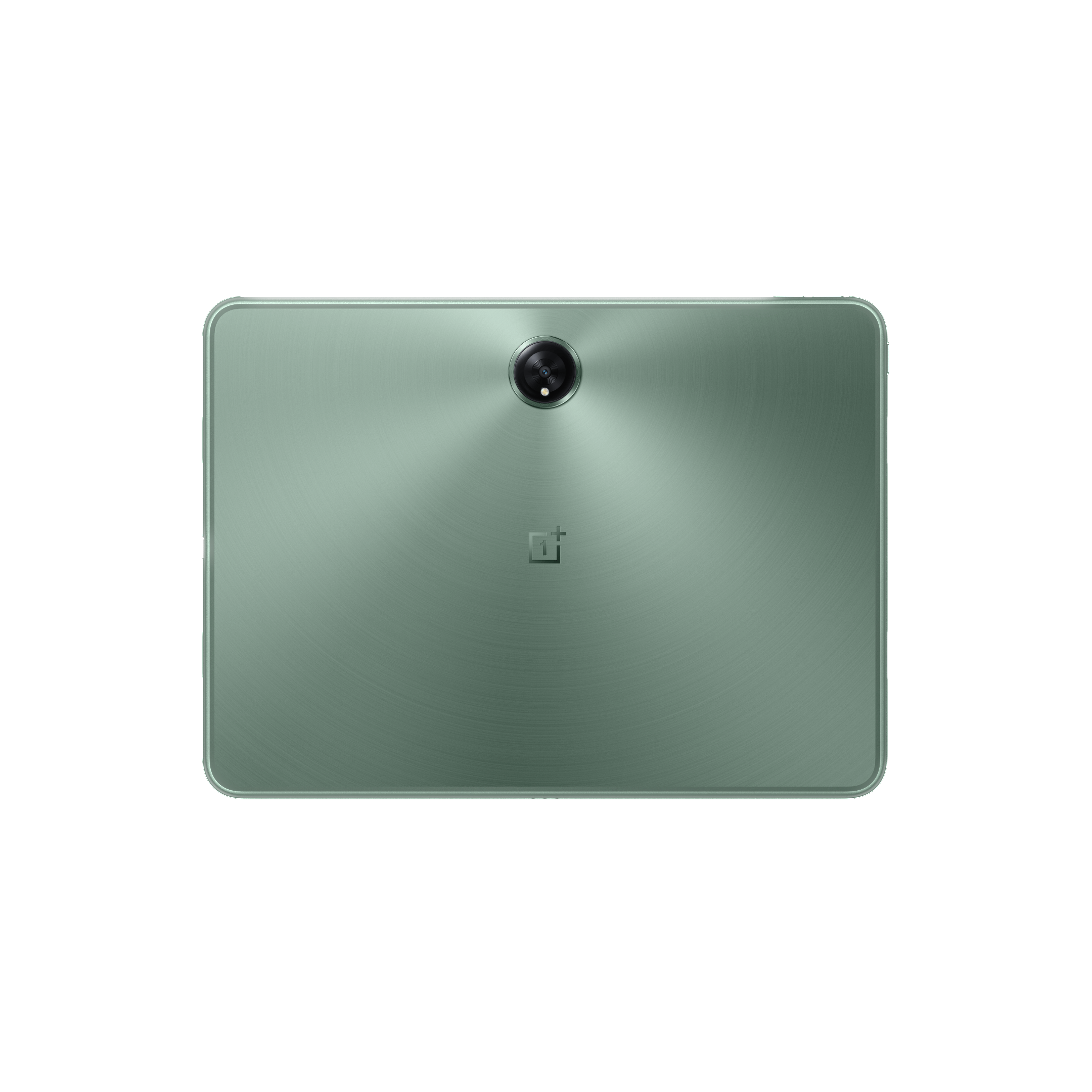
OnePlus Pad
The OnePlus Pad is a great tablet for Android aficionados. It runs without hiccups or freezes, and its OxygenOS is easy to use. It is ideal for anything from web browsing to productivity. You also get four speakers and a screen with up to a 144Hz refresh rate.

